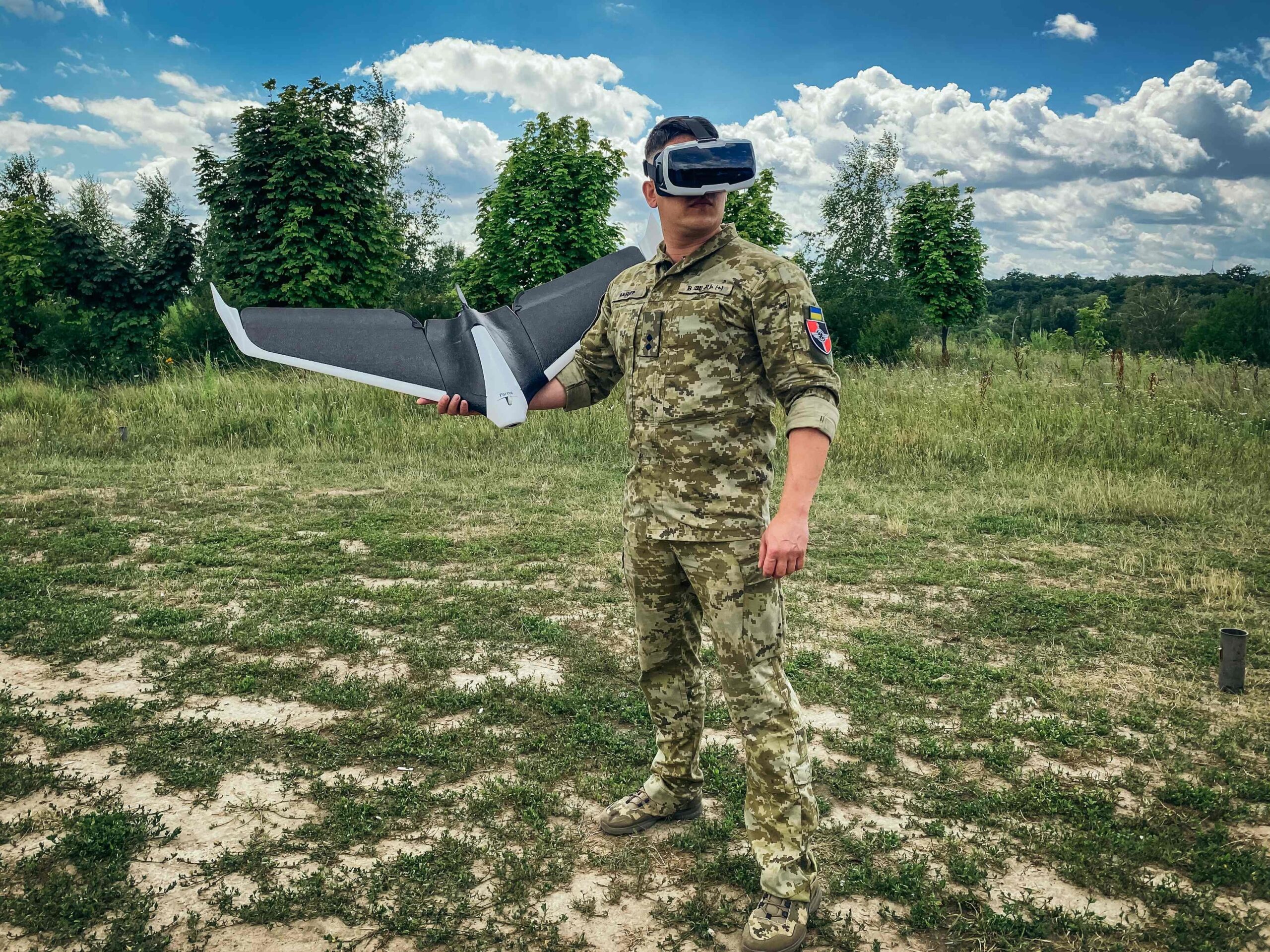In a field outside the Ukrainian capital kyiv, a van kicks up dust as it rolls down a hill with its passengers singing to the tune of the 1980s hit sitcom “Police Academy.” But it is not a US police vehicle, but a Ukrainian Army Mitsubishi L200 in pursuit of a quadcopter surveillance drone.
These soldiers are training to be the eyes of the Ukrainian military, which has embarked on a massive expansion of its fleet of surveillance drones. On this day, the ten soldiers learn to pilot their devices from a moving vehicle.
“It is very important to have a drone in every combat unit because they are our eyes in the sky,” says Lt. Anton Galianshinski, 40, a visual data analysis expert who is taking part in the exercise.
The Turkish combat drones of the Ukrainian army have been the talk of the town since the beginning of the conflict, inflicting severe damage on Russian armor. But Ukraine had no surveillance drones before the war. Lacking such a unit, they must have relied on patriotism and donations for pilot equipment and training.
The soldiers that AFP accompanied are taking courses at the Global Drones Academy, a company run by Anton Veklenko, a drone pilot since 2015 and “highly in demand” since the start of the war. “One of the most important aspects of training is safety,” Veklenko told AFP.
A specialist in photos taken by drone, Veklenko, 35, teaches how to fly – and above all how to avoid Russian shots. “At the beginning of the war, many of our military died because they did not know they were being watched,” she said. “We developed a method that allows the pilot not to reveal his position,” she added without elaborating.
The small drones allow kyiv to reconnoiter along the front line, detect Russian troops and equipment, and even direct artillery fire from a distance. They save Ukrainian lives, but they are expensive and scarce.
The two sides have also used smaller radio-controlled machines, but kyiv says Russian electronic countermeasures increasingly interfere with their communication systems.
At the beginning of July, Ukrainian President Volodimir Zelensky called for donations from around the world in order to create a Ukrainian “dron army”. 13.5 million dollars were raised, which financed a first series of 200 devices equipped with thermal cameras, GPS and mapping software. “The essential thing is that they are difficult to detect so that they are difficult to bring down,” says the website linked to Zelensky’s appeal.
According to Yuri Shchygol, head of the Ukrainian cybersecurity and intelligence service, a contract with Polish manufacturers has already been signed and four tactical drones have been received. His teams are studying possible contracts in Portugal, the United States, Japan and Israel, he added this week at a press conference.
Zelensky also called for “dronations” of these small devices to countries like the United States and Poland. Hobbyists and commercial drone pilots began donating their drones to bolster the “drone army,” but Ukraine is aiming higher.
“We have received 30 drones under the Donate Your Drone program, both from Ukrainians and abroad. Our goal is to collect 1,000,” says Shchygol.
The campaign took on an urgent tone this week, with US officials warning that Russia intends to acquire hundreds of combat drones from Iran. Learning to operate civilian drones takes two weeks, according to Shchygol, while military reconnaissance drone pilots receive a month’s training.
However, Shchygol believes that the Ukrainian drone army will bear fruit beyond the conflict with Russia. After all, he recalls, “Elon Musk himself has said that the wars of the future will be decided by drones.”
Conforms to The Trust Project criteria
















